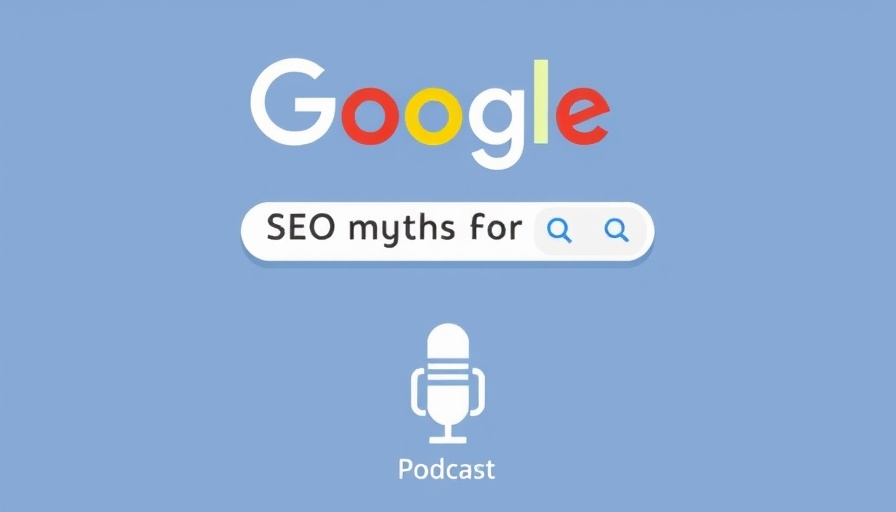
Why Bad HTML Doesn’t Doom Your Website
In the recent episode of Google’s Search Off the Record podcast, it was revealed that most of the top-ranking websites include invalid HTML. This finding may appear shocking, especially to developers who adhere to coding standards, but it highlights a crucial takeaway for ambitious entrepreneurs and marketing professionals: perfect code is not a prerequisite for digital success. Instead, what truly matters is how well you understand your audience and create a user-focused experience.
Key Insights from Google’s Findings
During the podcast, Search Advocate John Mueller stated, "0.5% of the top 200 websites have valid HTML on their homepage. One site had valid HTML. That’s it." This startling number sheds light on an essential fact: many successful sites use compromised HTML, which doesn't seem to hinder their search performance. Instead of obsessing over code, businesses should focus on creating valuable content tailored to their customers' needs.
The Role of Search Engines and HTML
As per Martin Splitt, a Developer Relations Engineer at Google, while search engines must deal with a variety of HTML errors, some critical factors still require accuracy. For instance, correctly implemented metadata is essential since malformed metadata can lead to significant issues in visibility. As an aspiring business owner or marketer, consider how your website communicates with search engines; ensuring metadata is correct could significantly influence your local search ranking.
Beyond the Technical Checklist
One of the biggest takeaways from the Google podcast is that SEO cannot be reduced to a mere checklist for developers. Mueller emphasized that SEO is also a nuanced mindset. Questions like "Am I using the terminology my customers would use?" become vital to a successful digital marketing strategy. This advice is particularly relevant for small business owners who are actively pursuing local business marketing strategies, as understanding customer language can enhance engagement.
Core Web Vitals: Not the Be-All-End-All
While many business leaders fret over having perfect Core Web Vitals scores, Mueller cautioned that these metrics don’t guarantee better rankings. Good scores can help, but they are only part of a larger picture in the competitive landscape. For anyone looking to elevate their local SEO strategy, investing in a comprehensive digital marketing strategy is essential.
Strategies for Small Business Success
In a rapidly evolving digital landscape, small and medium-sized businesses can harness these insights to fuel growth:
- Local Business Marketing: Focus on understanding your target demographic and adapt your messaging accordingly.
- Content Marketing: Invest in creating high-quality, relevant content that meets the needs of your audience.
- Engagement Strategies: Develop a solid social media strategy and utilize platforms to engage with your community effectively.
Practical Tips for Improved Visibility
For ambitious entrepreneurs looking to improve their digital footprint, consider these additional tips:
- Optimize your Google My Business profile to enhance local search visibility.
- Implement a comprehensive email marketing strategy to boost customer engagement and retention.
- Use analytics tools to track performance metrics, allowing for informed decisions around your marketing strategies.
Conclusion: Adaptability is Key
Understanding that coding perfection is not essential opens the doors for small and medium-sized businesses to innovate and adapt their strategies. A shift from technical compliance to audience engagement and value creation may be what your marketing strategy needs. Now is the time to harness this knowledge and transform your approach to digital marketing.
Call to Action: Ready to elevate your local business marketing? Start exploring actionable digital marketing strategies tailored to your business's unique needs today for better community engagement and visibility.
 Add Row
Add Row  Add
Add 




Write A Comment